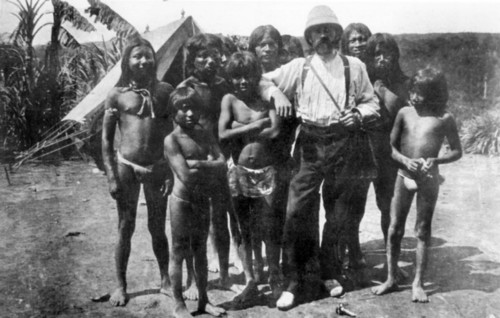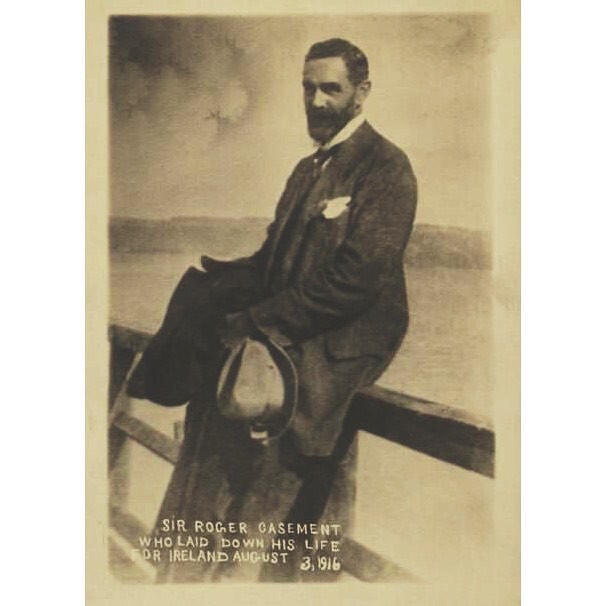Having hosted a family Christmas, I spent the following week buried in a present from my son – The Dream of the Celt by Peruvian writer Mario Vargas Llosa. Llosa won the Nobel prize for literature in 2010, the year the book was published in Spanish “for his cartography of structures of power and his trenchant images of the individual’s resistant, revolt and defeat”- almost a perfect description of the Dream of the Celt.

The book provides an account of the life of Roger Casement, an Anglo-Irish diplomat, hanged for treason at Pentonville Prison in London on 3 August 1916. Personally, I first came across Casement’s story when reading Adam Hothschild’s book King Leopold’s Ghost on the atrocities in the Congo Free State between 1885 and 1908, and the campaign to end them.
Hanging over the posthumous reputation of Casement for much of the twentieth century were the notorious ‘Black Diaries’, circulated by the British government after his conviction for treason. These described a series of homosexual encounters, regularly involving payment for sex, and were successful in undermining support for Casement and his appeal for clemency.
Although many have tried to show that these were forgeries, there is no clear consensus among historians, and I was struck by the way in which Llosa wove the diaries into his narrative, suggesting that the encounters described were as much a work of fantasy as an account of actual events, through which Casement found escape from the multiple contradictions in which he found himself embedded.

Originally an employee of Liverpool’s Elder Dempster shipping line, Casement became British consul in Leopold’s Congo. He compiled evidence and produced a report on the reign of terror of the Congo’s Force Publique – who extracted rubber and other resources from the territory allocated to King Leopold of Belgium’s International African Association by the 1884 Berlin Conference using forced labour. Casement’s 1904 report, and the subsequent campaign of the Congo Reform Association, led the Belgian state take direct control of the colony in 1908.
But Casement’s story did not end there. In 1906 he was sent to Brazil, and he participated in a commission to investigate the enslavement of indigenous people in Putumayo by the Peruvian Amazon Company, a British registered company. The principal informants were a number of overseers from Barbados – British citizens – whose accounts became part of the report Casement published, enabling their voices to be heard at the centre of the global financial system in London.

Knighted in 1911, Casement appears to have recognised echoes between the treatment of indigenous people in Africa and South America and the long history of Ireland, ultimately aligning himself with the cause of Irish Nationalism. The outbreak of the World War I provide an opportunity to take forward these commitments, and Casement spent time in Germany, attempting, largely unsuccessfully, to gain support of the Irish cause and recruit an Irish Brigade among prisoners of war.
On 21 April 1916, Good Friday in fact, Casement put ashore from a German U-boat at Banna Strand in the far West of Ireland, as part of his attempt to prevent the Easter rising, which he saw as doomed to failure without German support. Casement was captured at McKenna’s Fort, an ancient ring fort, and sent to London for trial.
For me, this detail of Casement’s story has always stood out – what is known as Casement’s Fort lies just over a mile from Abbeylands, the house in Ardfert where my grandfather was born. Reading his memoirs, which my father digitised during the first lockdown in 2020, my grandfather recalled being teased as a child for bathing in a hole dug in the sand at Banna Strand, because he was afraid to breast the Atlantic breakers.
Although the family identified as Irish Nationalists, my grandfather remembered the Easter Rising and Casement’s landing as ‘badly organised by political idealists and, as such, was doomed to failure’. For my grandfathers’ parents, the events of Easter 1916 were overshadowed by the death of their eldest son, aged 19, in Mesopotamia during a First World War military engagement.

Reading the book formed part of my own preparation for a new module on Race and Visual Culture Across Atlantic Worlds, which aims to explore parallels and connections around the Atlantic basin. Casement’s life concretely links the histories of Europe, Africa and the Americas, and I was struck that Vargas organises his narrative into three sections – The Congo, Amazonia and Ireland – while returning repeatedly to Pentonville Prison in the days before Casement’s execution in August 1916.
While neither the Congo nor Amazonia were British colonies, the operation of British corporations provided in these territories provided the pretext for Casement’s diplomatic actions. For me, what the book best illuminated was the exploitation and inhumanity that can arise from the activities of faceless bureaucratic profit-seeking global corporations.
While the Imperial world in which Casement lived is unlike our own in some ways, what was most recognisable in reading the book was the operation of the Peruvian Amazon Company. Registered in London, with Directors drawn from the great and the good, its employees nevertheless perpetrated unthinkable cruelties, essentially unseen, in another part of the world. Like any corporation, the Company’s response to the press coverage generated by Casement’s report centred on reputation management.
While the abuses Casement detailed shocked shareholders in London, Llosa’s account of Casement’s return to Putumayo makes it clear that this outrage was not enough to significantly alter the operation of vested interests in regions that lay beyond clear legal oversight.

As the newspapers have been full of stories in recent days about the acquittal of four activists for toppling the statue of Edward Colston, Director of the Royal African Company, I have been reflecting on the history of the corporate power across the Atlantic world – much more longstanding and continuous than the relatively short-lived Imperial control of the African continent in the decades after 1884.
Like Rhodes, a Director of the British South African Company, Colston was an institutional ancestor to the people who continue to direct City of London corporations in their global operations today. If we want to understand the antipathy of the current British government to the actions of the statue-topplers, we must recognise that there is scarcely a hair’s width between current and earlier generations of City of London company directors.
The transfer of the Congo to direct control by the Belgian state was intended to rein in the excesses of corporate profit-seeking government, just as the termination of the termination of East India Company’s control of India in 1858 marked the inauguration of the High Imperial period that followed. Without the institutions of the state to oversee, regulate and mitigate corporate operations and employees, we all remain essentially at their mercy.
W.B. Yeats’ 1937 poem, The Ghost of Roger Casement asks us to consider Casement’s return in the present. In a year that celebrates a centenary of Irish independence, seven years after same-sex marriage was legalised by popular vote in the Republic, and two years after it became legal in Antrim where the Casement family hailed from, one suspects that the Ghost of Roger Casement would be pleased with his homeland in a number of ways.
But what does the ghost of Roger Casement demand in relation to the wider world? How much has political decolonisation since 1922 enabled corporate operations to escape state-imposed restrictions and oversight in large parts of the world, Ireland perhaps included? While people talk readily about decolonisation, can we even imagine a de-corporatised world?
The Ghost of Roger Casement
Is beating on the door.